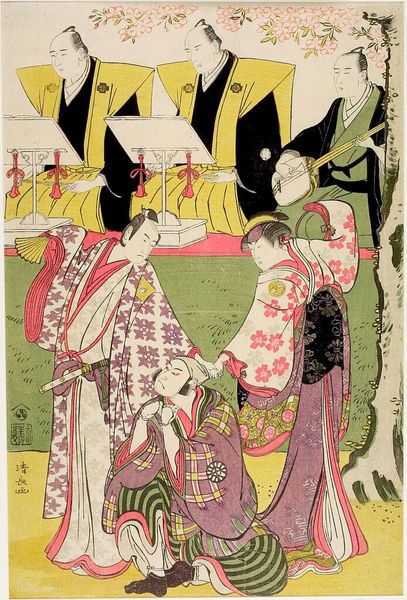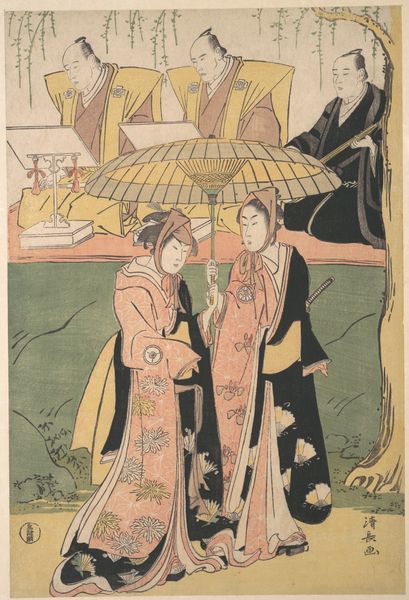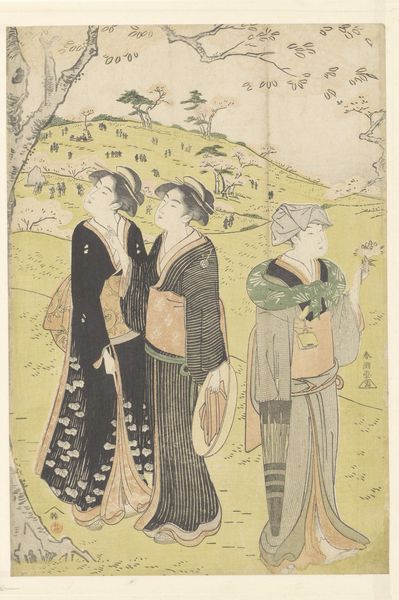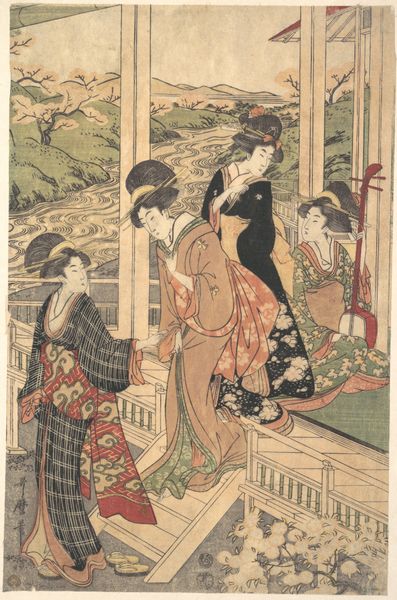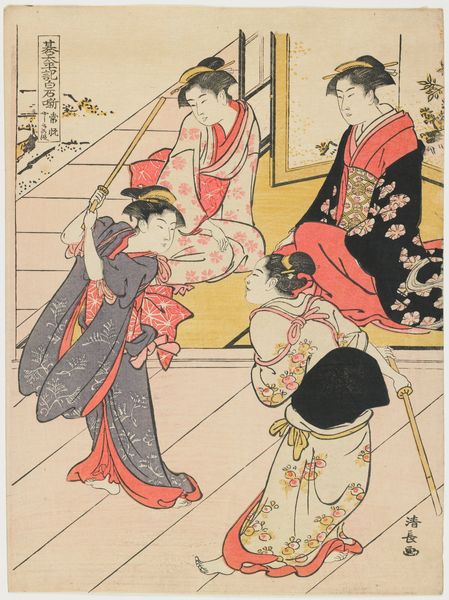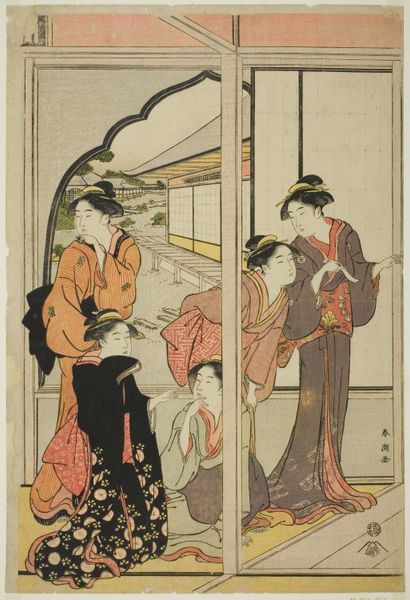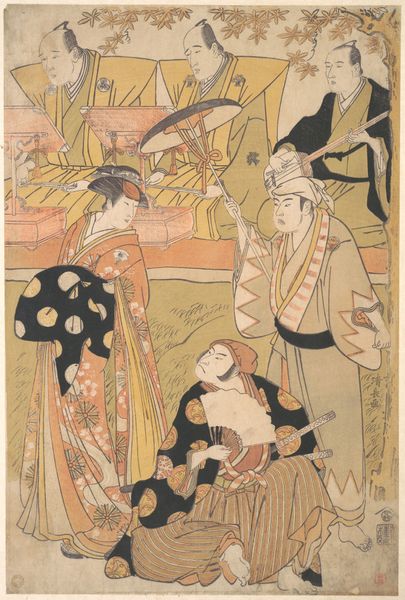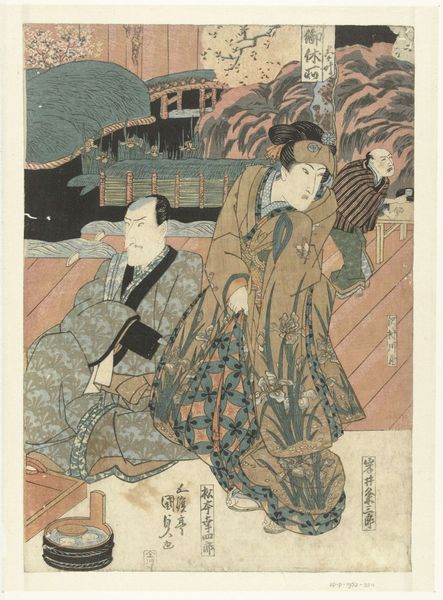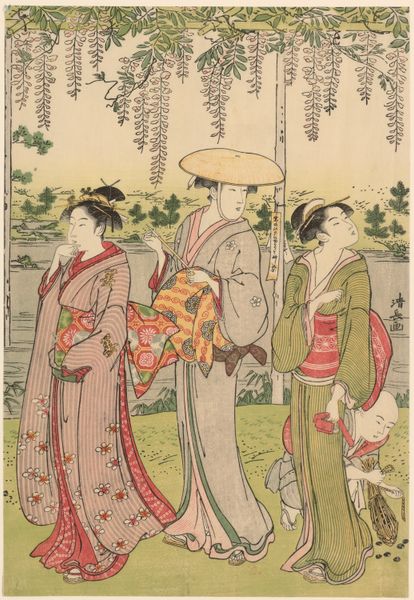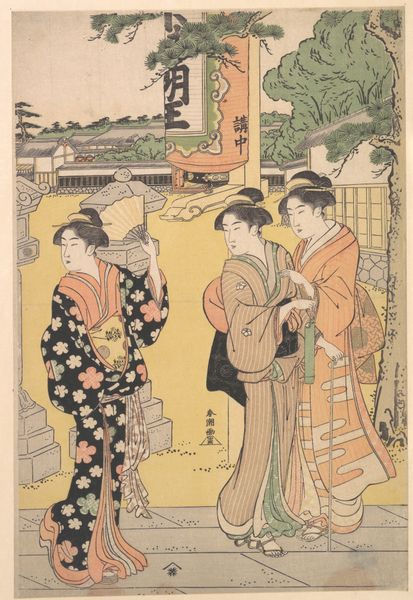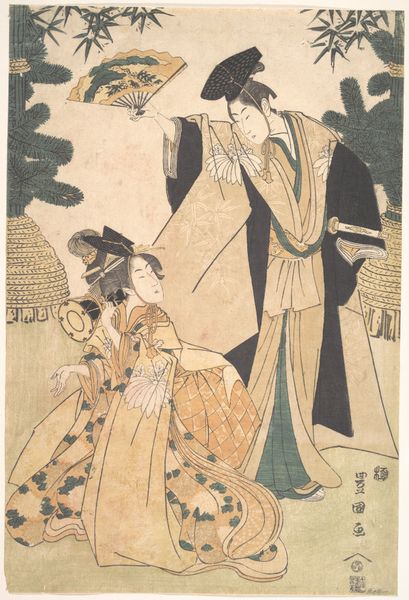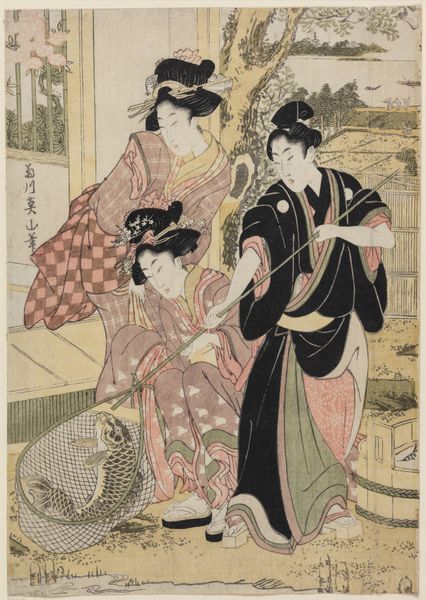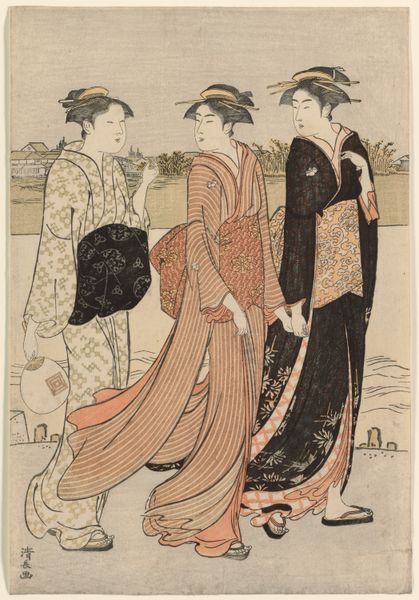
The Actors Ichikawa Monnosuke II as Munesada, Segawa Kikunojo III as the courtesan Sumizome, and Nakamura Nakazo I as Sekibei, in the play "Tsumoru Koi Yuki no Seki no To," performed at the Kiri Theater in the eleventh month, 1784 1784
0:00
0:00
print, woodblock-print
#
ink painting
# print
#
asian-art
#
ukiyo-e
#
figuration
#
linocut print
#
woodblock-print
#
genre-painting
Dimensions: 38.4 × 25.4 cm
Copyright: Public Domain
Curator: Oh, what a scene! My eyes are immediately drawn to the bowed figure in the foreground; there's a palpable sense of remorse or perhaps desperation in his posture. Editor: You’re right, that figure demands attention. This is "The Actors Ichikawa Monnosuke II as Munesada, Segawa Kikunojo III as the courtesan Sumizome, and Nakamura Nakazo I as Sekibei, in the play 'Tsumoru Koi Yuki no Seki no To,'" a woodblock print created by Torii Kiyonaga in 1784. The work is housed here at the Art Institute of Chicago. Look how Kiyonaga captures not just individual expression but a whole complex of social relations through Kabuki theater! Curator: Indeed! Kabuki is so ripe with symbols and stylized gestures, it becomes its own language. Note how the courtesan Sumizome, places her hand on the downcast character's head – a gesture laden with either comfort or dominance, depending on the play's context and relationship dynamic portrayed. Editor: Absolutely, it reflects a carefully constructed power dynamic. In Japanese culture and especially on stage, gestures carry a specific weight of societal expectation and assigned roles, that we must interpret. The higher positioning of the musicians visually reinforces a kind of social hierarchy, a stratified reality so consciously stylized by Kabuki performance. Curator: And the costuming! It's not merely decorative. The patterns and colors worn by each actor would communicate status, allegiances, perhaps even hidden character traits to an audience well versed in their semiotic significance. Even today we recognize that encoded meaning through dress; imagine the resonance for audiences back then! Editor: And consider, too, that Kabuki was, and to some extent still is, a form of popular entertainment and at certain times even resisted because it became too closely associated with particular social or political viewpoints! It offers us insight into Edo-period societal dynamics, its expectations and limitations. Looking back it invites us to consider performativity today and question who dictates the rules around representation. Curator: Exactly. And seeing the players elevated, on that raised platform, emphasizes how every action is elevated from mere existence into grand symbolic gesture. Thank you, this image invites reflections on enduring meanings and how we assign new values! Editor: Right back at you, thank you for making us think about the connections from theatrical stage to modern real world stagecraft!
Comments
No comments
Be the first to comment and join the conversation on the ultimate creative platform.
